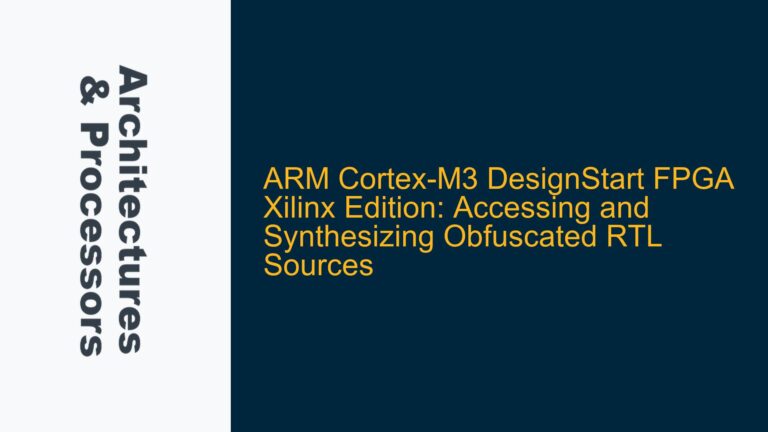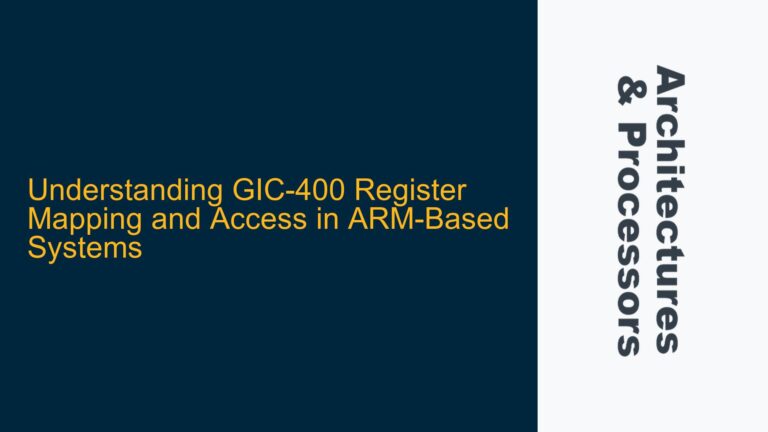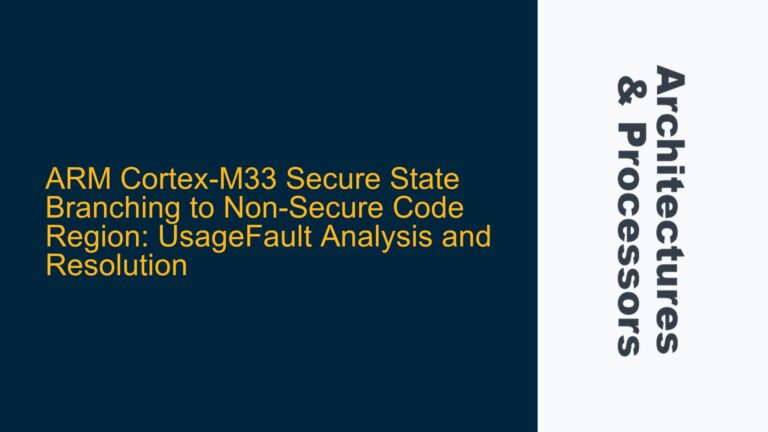GIC-500 Initialization and Configuration Complexity in Bare-Metal Systems
The integration of the ARM Cortex-A35 processor with the Generic Interrupt Controller 500 (GIC-500) in a bare-metal environment presents several challenges, particularly in the initialization and configuration of the GIC-500. The GIC-500 is a critical component in managing interrupts for multi-core systems, and its proper setup is essential for ensuring reliable interrupt handling between the Cortex-A35 cores and the GIC-500. The complexity arises from the need to manually configure the GIC-500 registers, set up interrupt priorities, and ensure that the interrupt distribution logic is correctly initialized. This process is further complicated by the lack of readily available bare-metal APIs or libraries specifically tailored for the GIC-500, which forces developers to rely on low-level register manipulation and ARM-provided documentation.
The GIC-500, being part of the GICv3 architecture, introduces several advanced features such as support for message-based interrupts, system register-based access, and enhanced interrupt prioritization. However, these features also add to the complexity of the initialization process. Developers must ensure that the GIC-500 is correctly configured to handle both legacy and new interrupt types, and that the interrupt routing logic is properly set up to direct interrupts to the appropriate cores. This requires a deep understanding of the GIC-500 register set, including the Distributor, Redistributor, and CPU Interface registers, as well as the ability to translate high-level interrupt handling requirements into low-level register configurations.
Lack of GIC-500 Specific Bare-Metal APIs and Documentation Gaps
One of the primary challenges in working with the GIC-500 in a bare-metal environment is the absence of dedicated APIs or libraries that simplify the initialization and configuration process. While ARM provides documentation and examples for the GICv3 architecture, these resources often do not address the specific nuances of the GIC-500 implementation. This forces developers to rely on generic GICv3 examples, which may not fully align with the GIC-500’s capabilities or requirements. The lack of GIC-500 specific APIs means that developers must manually implement the necessary initialization routines, which can be error-prone and time-consuming.
The documentation gaps further exacerbate the issue, as developers may struggle to find detailed information on the GIC-500’s register layout, initialization sequence, and configuration options. This is particularly problematic for developers who are new to ARM architectures or who are transitioning from other interrupt controller implementations. The absence of comprehensive examples or tutorials that focus specifically on the GIC-500 also makes it difficult for developers to validate their initialization code or troubleshoot issues that arise during the development process. As a result, developers may need to spend significant time reverse-engineering the GIC-500’s behavior or consulting with ARM support to resolve configuration issues.
Implementing GIC-500 Initialization and Interrupt Handling in Bare-Metal Code
To address the challenges of GIC-500 initialization and interrupt handling in a bare-metal environment, developers must adopt a systematic approach that involves careful planning, thorough testing, and iterative refinement. The first step is to familiarize oneself with the GIC-500’s register set and the GICv3 architecture documentation provided by ARM. This includes understanding the role of the Distributor, Redistributor, and CPU Interface registers, as well as the various configuration options available for interrupt prioritization, routing, and handling.
Once the basic concepts are understood, developers can begin implementing the initialization sequence for the GIC-500. This typically involves setting up the Distributor and Redistributor registers to enable interrupt distribution, configuring the CPU Interface registers to handle interrupts on each core, and setting up the necessary interrupt priorities and routing logic. Developers should also ensure that the GIC-500 is correctly integrated with the Cortex-A35 cores, and that the interrupt handling routines are properly synchronized across all cores.
To validate the initialization code, developers should implement a series of test cases that cover various interrupt scenarios, including edge cases such as high-priority interrupts, nested interrupts, and interrupt masking. These test cases should be run on the target hardware to ensure that the GIC-500 is functioning as expected and that interrupts are being handled correctly by the Cortex-A35 cores. Any issues that arise during testing should be carefully analyzed and addressed, with a focus on identifying and resolving configuration errors or synchronization issues.
In addition to the initialization and testing process, developers should also consider implementing a set of utility functions or macros that simplify common GIC-500 operations, such as enabling or disabling interrupts, setting interrupt priorities, and handling interrupt acknowledgments. These utilities can help reduce the complexity of the interrupt handling code and make it easier to maintain and extend the bare-metal firmware over time. By following these steps, developers can successfully implement GIC-500 initialization and interrupt handling in a bare-metal environment, ensuring reliable and efficient interrupt management for their ARM Cortex-A35-based systems.






